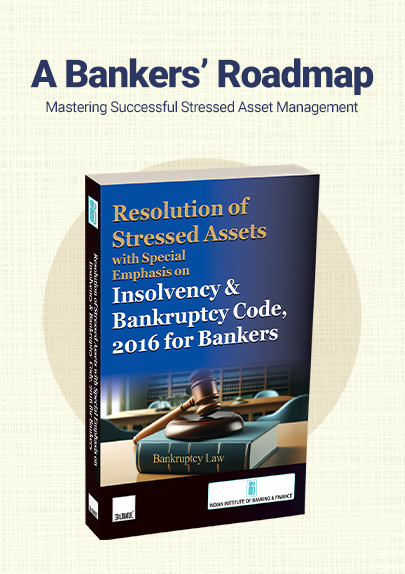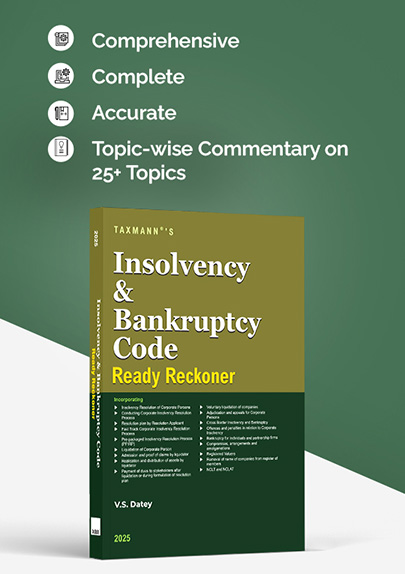NCLT Rejects Applicant’s Plea Challenging Approved RP as He Being a Third Party Had No Nexus to CIRP of Corporate Debtor
- News|Blog|Insolvency and Bankruptcy Code|
- 2 Min Read
- By Taxmann
- |
- Last Updated on 4 February, 2025
Case Details: Astral Agro Ventures v. Vakati Balasubramanyam Reddy - [2025] 170 taxmann.com 771 (NCLT-Mum.)
Judiciary and Counsel Details
- Ms Reeta Kohli, Judicial Member & Ms Madhu Sinha, Technical Member
-
Madhavi Nallurai, Adv. for the Applicant.
-
Akash Menon, Pulkitesh Dutt Tiwari, Advs. & Ankit Pitti, CA for the Respondent.
Facts of the Case
In the instant case, the CIRP of the corporate debtor was initiated and respondent/RP was appointed. The Respondent made public announcements inviting Expressions of Interest (‘EOI’) from interested Prospective Resolution Applicants (‘PRAs’) for corporate debtor.
The applicant/PRA submitted EOI regarding the CIRP. The applicant sought an extension for submitting the resolution plan and the Committee of Creditors (CoC) approved the applicant’s request.
The Resolution Plan submitted by SRA/company ‘A’ was declared as approved by the CoC. Thereafter, the applicant filed an instant application seeking rejection of the resolution plan submitted by the SRA on the ground that one of the directors of SRA, RJ was suspended director of the company ‘ABG’ whose accounts were declared NPA
Accordingly, the applicant alleged that SRA was ineligible as per the provisions of section 29A of the IBC.
It was noted that since the corporate debtor was an MSME, the provision laid down in section 240A of the IBC would be applicable and thus, as per section 240A provisions of section 29A(c) and (h) would not apply.
Further, it was noted that EOI which forms basis of petition was not submitted by applicant, thus, applicant was a third party with no nexus to CIRP of corporate debtor and had no basis or locus for filing instant application.
NCLT Held
The NCLT held that since applicant never submitted a resolution plan nor provided any evidence of EMD payment, instant application was filed with malafide intentions and was designed to cause unwarranted delay in the CIRP of the corporate debtor and was to be dismissed.
List of Cases Reviewed
- MK Rajagopalan v. S. Rajendran [Company Appeal (AT) (CH) (INS) No. 58 of 2023 NCLAT, (Para 5), followed.
List of Cases Referred to
- M.K. Rajagopalan v. Dr. Periasamy Palani Gounder & Anr. [Civil Appeal Nos. 1682-1683 of 2022] (para 18)
- Arikala Narasa Reddy v. Venkataram Reddy Reddygari & Anr. 2014 (5) SCC 312 (para 3).
Disclaimer: The content/information published on the website is only for general information of the user and shall not be construed as legal advice. While the Taxmann has exercised reasonable efforts to ensure the veracity of information/content published, Taxmann shall be under no liability in any manner whatsoever for incorrect information, if any.

Taxmann Publications has a dedicated in-house Research & Editorial Team. This team consists of a team of Chartered Accountants, Company Secretaries, and Lawyers. This team works under the guidance and supervision of editor-in-chief Mr Rakesh Bhargava.
The Research and Editorial Team is responsible for developing reliable and accurate content for the readers. The team follows the six-sigma approach to achieve the benchmark of zero error in its publications and research platforms. The team ensures that the following publication guidelines are thoroughly followed while developing the content:
- The statutory material is obtained only from the authorized and reliable sources
- All the latest developments in the judicial and legislative fields are covered
- Prepare the analytical write-ups on current, controversial, and important issues to help the readers to understand the concept and its implications
- Every content published by Taxmann is complete, accurate and lucid
- All evidence-based statements are supported with proper reference to Section, Circular No., Notification No. or citations
- The golden rules of grammar, style and consistency are thoroughly followed
- Font and size that’s easy to read and remain consistent across all imprint and digital publications are applied






 CA | CS | CMA
CA | CS | CMA


